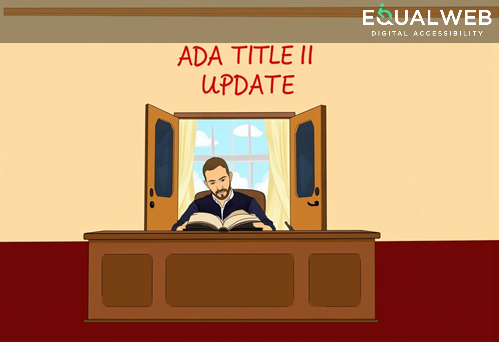Why ADA Compliance Matters for E-commerce
ADA compliance isn’t just about legal obligations—it’s about fostering inclusivity, protecting your brand, and growing your business. Here’s why accessibility is a non-negotiable for e-commerce:
Inclusivity and Equal Access
E-commerce serves a global audience, including individuals with visual, auditory, motor, and cognitive disabilities. Making your website accessible ensures all users can shop easily, aligning your business with values of inclusivity and fairness.
Explore our page on the importance of inclusivity.
Minimizing Legal and Financial Risks
Inaccessible websites are frequent targets for lawsuits, with fines and settlements costing businesses millions. Ensuring ADA compliance protects your company from legal challenges while safeguarding your reputation.
Expanding Your Customer Base
Accessibility expands your reach to a broader audience, including people with disabilities who represent a significant market share. Providing an inclusive shopping experience fosters loyalty and positions your brand as forward-thinking.
Discover the ROI of accessibility to learn how inclusivity boosts business performance.
Essential Accessibility Features for E-commerce
To create an accessible e-commerce platform, prioritize these key features:
Keyboard-Friendly Navigation
Many users rely on keyboards or assistive technologies to navigate websites. Ensure every interactive element—menus, product filters, buttons, and forms—works seamlessly with keyboard inputs.
Screen Reader Compatibility
Screen readers convert on-screen content into audio or Braille. Use proper HTML structure, ARIA roles, and descriptive alt text to make your website screen reader-friendly.
Clear, Contextual Labels
Replace vague terms like “Click here” with actionable phrases like “View Product Details.” This improves accessibility and provides clarity for all users.
Accessible Visual Design
Use high-contrast color schemes, legible fonts, and properly labeled images to ensure readability and usability for all users.
Try our
Color Contrast Checker to optimize your site’s visuals.
Optimizing Product Pages and Checkout Processes
Accessible Product Pages
Product pages are a key touchpoint for users. Ensure they include:
- High-quality alt text for images.
- Properly structured headings for easy navigation.
- Clear and concise descriptions for product details.
Inclusive Checkout Processes
Simplify checkout to ensure accessibility:
- Use clear form labels and instructions.
- Avoid time constraints that may challenge users with disabilities.
- Offer multiple payment options compatible with assistive technologies.
Learn about designing accessible checkout systems.
Maintaining ADA Compliance
Compliance isn’t a one-time task—it requires ongoing effort to meet evolving standards like
WCAG (Web Content Accessibility Guidelines). Here’s how to stay ahead:
- Automated Testing
Use tools like EqualWeb’s Accessibility Checker to find and fix accessibility gaps.
- Manual Audits
Supplement automated checks with real-user testing to ensure usability for people with disabilities.
- Regular Updates
Keep your website aligned with the latest ADA and WCAG standards to avoid compliance risks.
Final Thoughts: Accessibility as a Business Advantage
ADA compliance is about more than avoiding lawsuits—it’s a commitment to inclusivity, innovation, and exceptional user experiences. An accessible e-commerce platform reduces barriers, attracts a larger audience, and builds customer loyalty.
Ready to make your website ADA-compliant? EqualWeb offers powerful tools and expert guidance to help you succeed.




